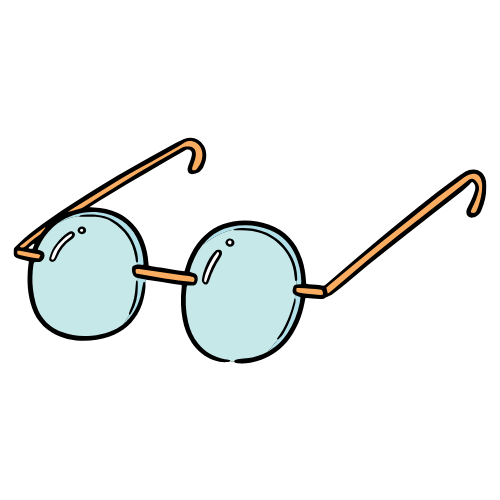What do you know of Spanish literature? There is of course Cervantes, whom unfortunately I can’t brag to have read. I did read Carlos Ruiz Zafón and his Shadow of the Wind, the first volume in a tetralogy which brings its reader back to 20th century Barcelona, and, thanks to a recommendation from a friend, I am currently dipping my toes in the writing of Javier Marías. Strictly speaking, that’s about how Spanish my reading background is. Or was, because lately I’m discovering more of what Spain has to offer in terms of literature. This is not a list of the “greatest” Spanish authors, but four writers I am currently discovering and who have something essential to say, not only about Spain, but about us, as people living in the world. If you’re looking to expand your reading with Spanish authors who may not always show up on mainstream lists, here’s a personal shortlist.
carmen laforet (1921-2004)
It was dawn at last. The third-class compartment smelled of weariness, cigarettes and soldiers’ boots.
‘Rosamunda’, 1952, first published in “La muerta”, translated by Kathryn Phillips-Miles and Simon Deefholts
Carmen Laforet is often the fist name you encounter when straying a bit off the English-translated path of Spanish literature. She published her best-known novel, Nada (Nothing) in 1944, when she was just 23 years old. The novel won the Premio Nadal, one of the country’s most prestigious literary prizes, and is now considered a classic of Spanish literature. Born in Barcelona in 1921 and raised partly in the Canary Islands, Laforet returned to the city after the Civil War, a personal echo of Andrea, the novel’s narrator. Laforet later published short stories and a few novels, including La mujer nueva, in 1955, which won the Premio Menorca. Nada remains a cornerstone of postwar Spanish literature and has since publication been constantly in print.
I discovered Laforet’s stories in The Penguin Book of Spanish Short Stories (2021) and in Take Six: Six Spanish Women Writers (2022). There is something very mundane and comforting in her short stories. They center on common people whom you might see on the street and not give them a second look, and the directness of the writing pulls you in. From what I’ve read I enjoyed most ‘Rosamunda’, originally published in 1952. The story is told in third person and opens in the third-class compartment of a train in motion, “coming out of a long tunnel”. Rosamunda, an older woman, starts telling her life story to a young soldier, who seems to listen to her attentively. But her story remains just a story, because glimpses of her real life darken her fantasy. And, as it will turn out, her listener is also trapped in his own perception.
medardo fraile (1925 – 2013)
If someone had told me I was going to live this life of doorbells and stairways, of brisk commerce and a briefcase full of froth, of playing the friendly pedlar from nine to five, I would never have believed them. Never.
‘The Lemon Drop’, 1959, first published in “A la luz cambian las cosas“, translated by Margaret Jull Costa
Medardo Fraile, professor of languages at the University of Stratchclyde in Scotland, spent his life perfecting the art of the short story. He published his first collection of short stories, Cuentos con algún amor in 1954, and established his foothold in Spain with two further collections over the following 10 years. Over the course of his life, he wrote a single novel, but six collections of children’s tales and countless articles and nonfiction pieces. Fraile’s style distances itself from realism. He pours sensitivity and emotion in his stories, reminding me of Katherine Mansfield and Chekhov. Like them, he often takes single moments in the lives of ordinary people and lets their inner light shine meaning.
Pushkin Press published Things Look Different in the Light in 2017, an anthology of Fraile’s stories which looks closer at the lives of men, women, children of different ages and with different social backgrounds. One of my favourites was ‘The Lemon Drop’, a story told in first-person present tense by a travelling salesman. His work is tedious and often unrewarding, when the potential customers he talks to decide to not buy anything in the end. At the end of the work day, before going home, he stops to buy three candies from children selling sweets on the street. On the walk home, his thoughts wander between his small failures, a growing sense of being unwell and his wife, welcoming him home. The heavy atmosphere of the story shifts after dinner, when he finally tastes the lemon drop. Its sharp sweetness pulls him back to his youth, and the story lifts for that brief moment of time.
javier marías (1951-2022)
I was beginning to like Baringo Roy. Perhaps he really was angry as well as being somewhat cocky, but that was apparent more in what he said than in the tone in which he said it.
‘A Sense of Camaraderie’, 2014, published in “Mala indole”, translated by Margaret Jull Costa
Javier Marías is probably one of the most internationally knows authors of Spanish literature, with his novels translated into over forty languages. He was also a translator himself, of Faulkner, Conrad, and Nabokov, which shaped his long, layered prose. His breakthrough came with Corazón tan blanco (A Heart So White, 1992), a novel that begins with a suicide and unfolds in a complicated narrative of a man trapped in the stories between past and present. He also wrote short stories, weekly columns and published essays, mixing literary reflection with sharp commentary on politics and the everyday. Reading him is slow work, but it’s the kind of slowness that’s rewarding.
‘A Sense of Camaraderie’, Marías’s short story published in The Penguin Book of Spanish Short Stories drew my attention because of the colourful character who stands at its center. It’s a first-person narrative told by a guest at a wedding who is bored by the talk of the priest and goes out of the church to smoke a cigarette. He meets another guest, who introduces himself as Baringo Roy. The two start talking, as you might expect, about the bride and the groom and how they are each acquainted to them. But the story takes an unexpected turn when Baringo Roy starts sharing very private things about the bride, and the reader, and the narrator, are left wondering both at the persona of Baringo Roy and at his story.
cristina fernández cubas (b. 1945)
We now think that the worst started a very long time ago, just like in a fairy-tale. It was a fairy tale that lasted only a single day, but that day was happy, there’s no denying it. Barbro, Northern Eyes, came into our father’s life when he most needed some love.
‘The End of Barbro’, 2015, published in “Nona’s Room“, translated by Kathryn Phillips-Miles and Simon Deefholts
I believe Cristina Fernández Cubas’s short stories are really something else. She’s written novels and a memoir, but it’s her short fiction that stands out – unsettling tales of characters who experience the ordinary slightly shifting out of place. Or at least that’s what they believe. Fernandez Cubas studied law and journalism and she published her first short story collection Mi hermana Elba in 1980. La habitación de Nona (Nona’s Room, 2015) was awarded the National Literature Prize for Narrative and it’s luckily available in English as well. Her writing is restrained, the events barely suggested, always leaving a crack in the surface for the reader’s own fears to slip through.
The 6 stories published in Nona’s Room live in the head of the first-person narrators. There is a sense of dread and danger in the air, but the question is more what the narrators believe and how does that reflect in the world around them. The most unusual story was, for me, ‘The End or Barbro’ because it leaves so much open to interpretation and it also has a fairy-tale-like quality. Three sisters have lost their mother and live contently with their father in an apartment. The situation shifts when the father meets Barbro, a Scandinavian woman who immediately steals the father’s heart and is initially also liked by the three sisters. But when small details of a dinner the five of them have in the apartment start cracking the perfect image Barbro made of herself, the sisters distance themselves more and more from their father and his new wife. The story is a first-person narrative told by one of the sisters, but always referring to “us”, all three of them. This gives the story an even eerier air because the reader is never sure on which side of the truth she finds herself.





your thoughts?